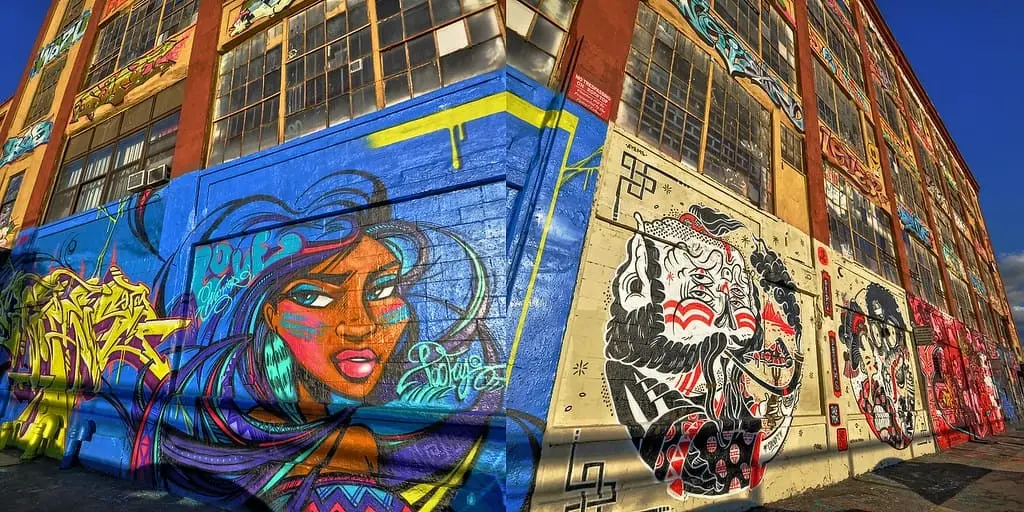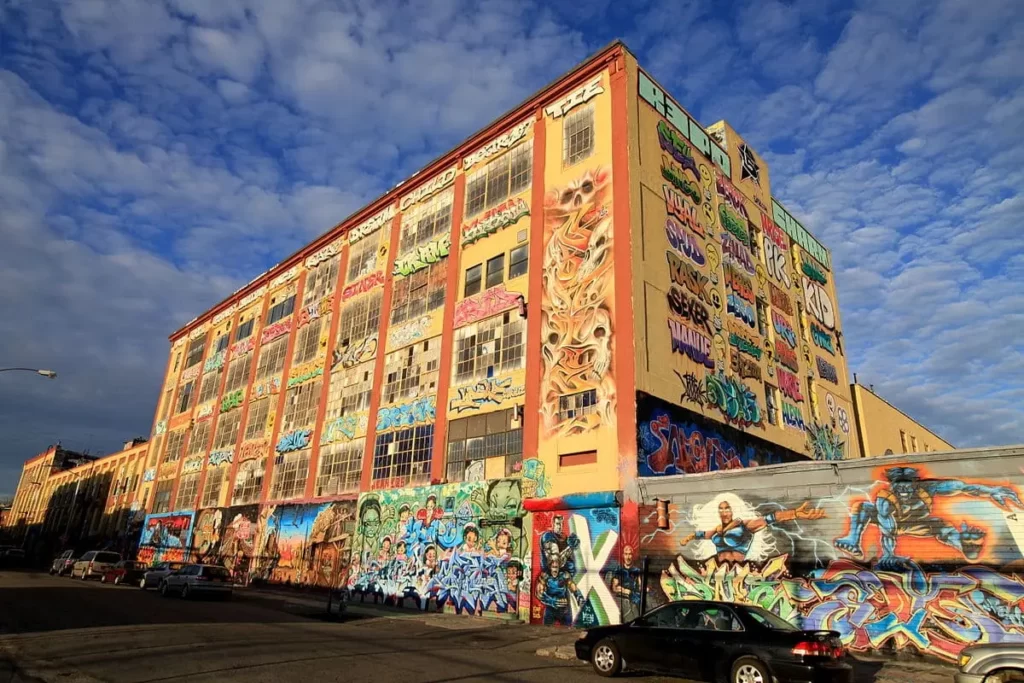In the heart of Queens, New York City, there once stood a legendary building known as 5 Pointz — a true Mecca for graffiti artists and street art lovers from around the world. For more than a decade, its massive walls served as a legal canvas for hundreds of artists, transforming an old factory into an open-air museum.
🏢 The History
Originally built in 1892 as a water meter factory, the building later became a magnet for New York’s creative community. In the early 2000s, graffiti artist Jonathan Cohen (aka Meres One) started curating the space, renaming it 5 Pointz to symbolize the five boroughs of New York coming together through art.
Artists from across the globe were invited to paint on its walls. 5 Pointz soon became an ever-changing gallery, featuring everything from wildstyle tags to breathtaking murals, political statements, and memorials.

🎨 More Than Just a Wall
5 Pointz was more than a graffiti spot; it was a hub for creativity, collaboration, and cultural exchange. Music videos were filmed here, street art tours made regular stops, and locals and tourists alike gathered to watch artists at work. Many aspiring artists had their first real experience here, and legends of the graffiti world left their mark on its walls.

⚖️ Controversy and Destruction
In 2013, despite international protests, the building’s owner decided to demolish 5 Pointz to make way for new luxury apartments. In a single night, the iconic murals were painted over in white, erasing years of creativity and history. The sudden destruction triggered outrage in the art community and beyond.
A group of artists took the owner to court, fighting for their rights under the Visual Artists Rights Act (VARA). In 2018, a U.S. court awarded $6.7 million in damages to the artists, recognizing the cultural value and artistic merit of their lost work — a landmark decision for street art rights.
🧱 Legacy
Though 5 Pointz is gone, its impact remains. It inspired generations of artists, became the subject of documentaries and urban legends, and played a major role in the acceptance of street art as a legitimate cultural movement.
Which street art sites have inspired you? Share your story below!




